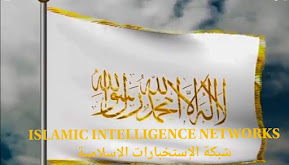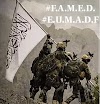Young participants in the 25th January Egyptian revolution have told the Palestine Information Centre that Egypt has been freed from a tyrannical regime and breaking the siege of Gaza is high on their list of priorities. Ousting Hosni Mubarak was difficult, they said, but it was just the beginning of the revolution, not the end. In Tahrir Square, they added, all sections of Egyptian society were united, including Muslims and Christians; leftists and members of the Muslim Brotherhood.
Ahmed Bahaauddin Shaaban, one of the founders of the Egyptian Movement for Change (Kifaya), told the PIC, “We took part in a real battle pitting the Egyptian people against the corrupt regime, which was heavily entrenched. However, the Egyptian people were able to uproot it.” The people of Egypt have taken one step on a long road, said Shaaban, by overthrowing a dictator and his oppressive regime. “However, we still have a lot to do. We have a programme for democracy, social reform, and the creation of a modern, developed state. We have shaken the regime, as can be seen clearly in the fall of its corrupt symbols.”
Mr. Shaaban warned that the struggle will be long. “The fall of an oppressive dictator like Mubarak affects the entire regime structure but we will be able to deal with its remnants,” he said. “In the past few days we have defeated the most oppressive forces in the country – the Central Security Force and the State Security Force – which have vanished into thin air.” So, he added, has the former ruling party, the National Democratic Party, which had three million members.
Arab issues are at the top of the revolution’s priorities, stressed Shaaban, and the people of the Gaza Strip are delighted by its success because they also suffered at the hands of Mubarak’s regime. “The people of Gaza will feel the effects of the revolution because the siege of Gaza will end and the kinship between the people of Egypt and Palestine will be restored.”
Amr Ibrahim, another of the young leaders of the revolution and a member of the Muslim Brotherhood chipped in: “The most important characteristic of this revolution was that it was impossible to tell people apart on the basis of which political movement they belonged to. Everyone in Tahrir Square was there under the banner ‘I am an Egyptian’. You couldn’t tell who was a leftist and who was a Muslim Brother, or who was a Christian and who was a Muslim.”
According to Mr. Ibrahim, the youth of the Muslim Brotherhood were involved in the revolution from its beginning on the 25th January having asked for permission from the movement’s leaders. As the demonstrations increased in intensity and the occupation of Tahrir Square by the demonstrators grew, instructions were given by the leadership of the Brotherhood to their younger members to enter Tahrir Square in great numbers. In the end, claimed Ibrahim, Muslim Brotherhood youth members made up between 40 and 50% of the demonstrators.
A spokesman for the 6th April Youth Movement asserted that the resignation of the president was not one of the demands of the youth of the revolution when they were preparing for the 25th January. “We wanted the sacking of the Interior Minister and the implementation of a court decision setting the minimum wage at 1200 Egyptian pounds per month,” said Ahmed Maher. “The groups taking part in the movement are very diverse but together they organised protests, using Facebook and on the ground, on the 25th January and on the Day of Anger on Friday 28th January, in addition to organising the million man demonstrations on the 1st February and the ‘Day of Departure’, 4th February.”
Maher believes that it is important for Egyptians to cooperate in planning Egypt’s future post-Mubarak; he proposed the formation of a delegation of youth and members of the Front for the Support of the Demands of the Revolutions to negotiate with the army’s leaders. It is necessary for the government of Egypt to be transferred to civilians, he said, adding that the revolutionary youth can still achieve a great deal in bringing forth the fruits of the revolution.
With regards to lifting the siege of Gaza, Maher said that the issue cannot be ignored. It is, he stressed, one of the demands of the revolution: “Pressure exerted by the revolutionaries as well as Sheikh Yusuf al-Qaradawi’s call to end the siege has obliged the army to fulfil this demand.” It is time to end the suffering of the people of Gaza, he said. This, ended Maher, has made the government in Israel “fearful” of Egyptian youth. “If young Egyptians demonstrated on the borders of occupied Palestine,” he grinned, “I wouldn’t rule out the Zionists packing up and leaving.”
RAFAH, (PIC)– The Egyptian authorities on Tuesday opened the Rafah border crossing with Gaza Strip in both directions after three weeks of closure but to a limited number of people.
A Palestinian source said that the Egyptian authorities allowed only 300 passengers daily to cross the terminal, noting that the crossing was closed following the outbreak of the Egyptian revolution that ousted former president Hosni Mubarak.
He underlined that travel will be allowed only for patients, students, those with residence permits in Egypt, and holders of visit visas to other countries.
He noted that 3,000 Palestinians wishing to travel had registered with the borders authority over the past few days.
Ahmed Bahaauddin Shaaban, one of the founders of the Egyptian Movement for Change (Kifaya), told the PIC, “We took part in a real battle pitting the Egyptian people against the corrupt regime, which was heavily entrenched. However, the Egyptian people were able to uproot it.” The people of Egypt have taken one step on a long road, said Shaaban, by overthrowing a dictator and his oppressive regime. “However, we still have a lot to do. We have a programme for democracy, social reform, and the creation of a modern, developed state. We have shaken the regime, as can be seen clearly in the fall of its corrupt symbols.”
Mr. Shaaban warned that the struggle will be long. “The fall of an oppressive dictator like Mubarak affects the entire regime structure but we will be able to deal with its remnants,” he said. “In the past few days we have defeated the most oppressive forces in the country – the Central Security Force and the State Security Force – which have vanished into thin air.” So, he added, has the former ruling party, the National Democratic Party, which had three million members.
Arab issues are at the top of the revolution’s priorities, stressed Shaaban, and the people of the Gaza Strip are delighted by its success because they also suffered at the hands of Mubarak’s regime. “The people of Gaza will feel the effects of the revolution because the siege of Gaza will end and the kinship between the people of Egypt and Palestine will be restored.”
Amr Ibrahim, another of the young leaders of the revolution and a member of the Muslim Brotherhood chipped in: “The most important characteristic of this revolution was that it was impossible to tell people apart on the basis of which political movement they belonged to. Everyone in Tahrir Square was there under the banner ‘I am an Egyptian’. You couldn’t tell who was a leftist and who was a Muslim Brother, or who was a Christian and who was a Muslim.”
According to Mr. Ibrahim, the youth of the Muslim Brotherhood were involved in the revolution from its beginning on the 25th January having asked for permission from the movement’s leaders. As the demonstrations increased in intensity and the occupation of Tahrir Square by the demonstrators grew, instructions were given by the leadership of the Brotherhood to their younger members to enter Tahrir Square in great numbers. In the end, claimed Ibrahim, Muslim Brotherhood youth members made up between 40 and 50% of the demonstrators.
A spokesman for the 6th April Youth Movement asserted that the resignation of the president was not one of the demands of the youth of the revolution when they were preparing for the 25th January. “We wanted the sacking of the Interior Minister and the implementation of a court decision setting the minimum wage at 1200 Egyptian pounds per month,” said Ahmed Maher. “The groups taking part in the movement are very diverse but together they organised protests, using Facebook and on the ground, on the 25th January and on the Day of Anger on Friday 28th January, in addition to organising the million man demonstrations on the 1st February and the ‘Day of Departure’, 4th February.”
Maher believes that it is important for Egyptians to cooperate in planning Egypt’s future post-Mubarak; he proposed the formation of a delegation of youth and members of the Front for the Support of the Demands of the Revolutions to negotiate with the army’s leaders. It is necessary for the government of Egypt to be transferred to civilians, he said, adding that the revolutionary youth can still achieve a great deal in bringing forth the fruits of the revolution.
With regards to lifting the siege of Gaza, Maher said that the issue cannot be ignored. It is, he stressed, one of the demands of the revolution: “Pressure exerted by the revolutionaries as well as Sheikh Yusuf al-Qaradawi’s call to end the siege has obliged the army to fulfil this demand.” It is time to end the suffering of the people of Gaza, he said. This, ended Maher, has made the government in Israel “fearful” of Egyptian youth. “If young Egyptians demonstrated on the borders of occupied Palestine,” he grinned, “I wouldn’t rule out the Zionists packing up and leaving.”
RAFAH, (PIC)– The Egyptian authorities on Tuesday opened the Rafah border crossing with Gaza Strip in both directions after three weeks of closure but to a limited number of people.
A Palestinian source said that the Egyptian authorities allowed only 300 passengers daily to cross the terminal, noting that the crossing was closed following the outbreak of the Egyptian revolution that ousted former president Hosni Mubarak.
He underlined that travel will be allowed only for patients, students, those with residence permits in Egypt, and holders of visit visas to other countries.
He noted that 3,000 Palestinians wishing to travel had registered with the borders authority over the past few days.
http://surf6009.appspot.com/u?purl=bG10aC55dGlyb2lycC1oZ2loLXNpLWF6YWctZm8tZWdlaXMtZ25pa2FlcmIvMjAvMTEwMi9tb2Mu%0AdG9wc2dvbGIuZ29sYi1zZHJhaGNpcnJvb3AvLzpwdHRo%0A





0 Comments